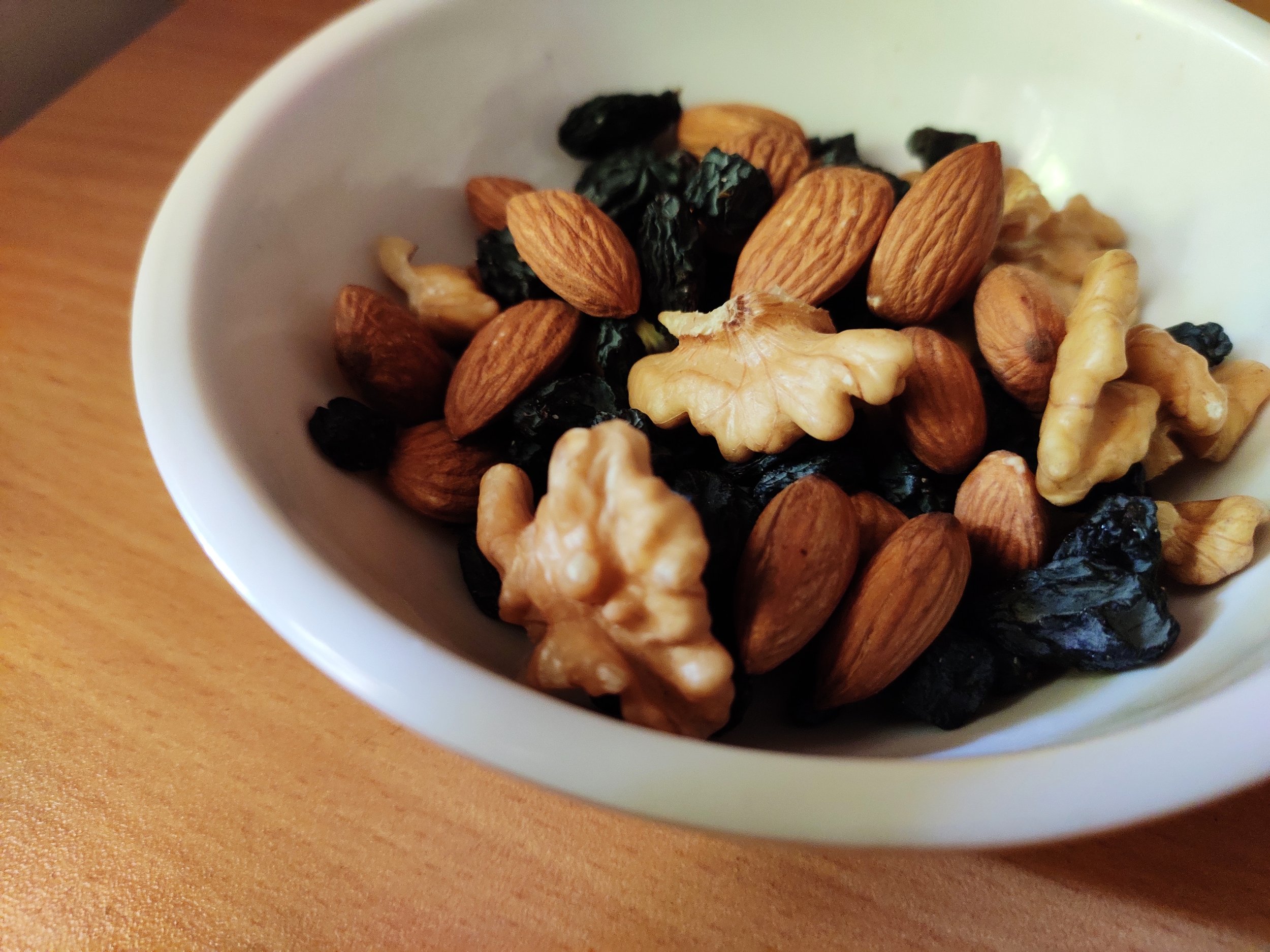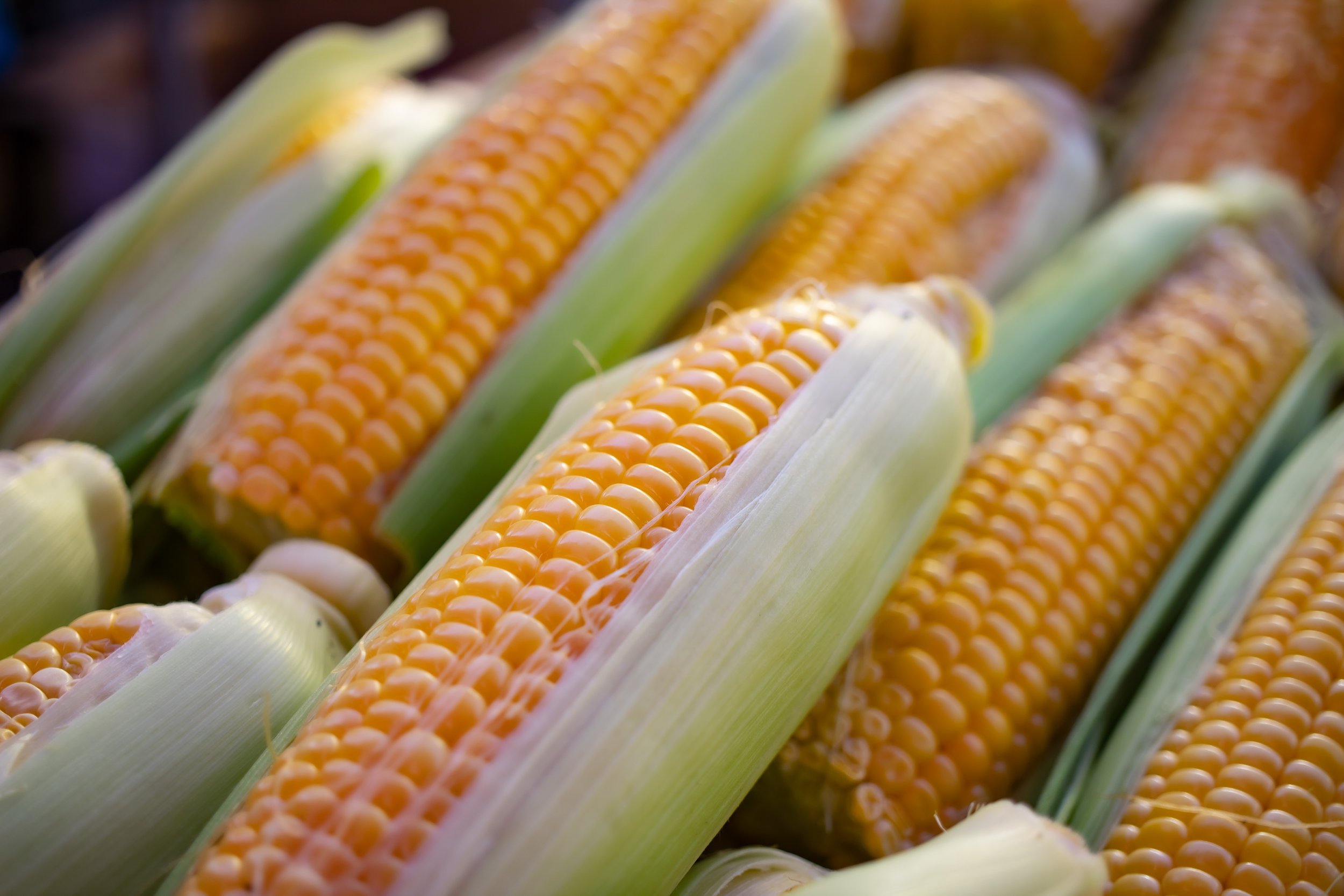Anti-Nutrients: What You Need to Know
/We've all heard that vegetables are the cornerstone of a healthy diet. However, there's a side to them that often goes unnoticed: anti-nutrients. Some individuals, especially those with chronic illnesses, can face challenges due to these compounds found in veggies.
Summary:
- What are Anti-Nutrients?
- The Misconceptions Around Plants
- Diversity of Anti-Nutrients
- Symptoms to Watch Out For
- Understanding Gluten and its Effects on the Body
- What is Gluten?
- Symptoms of Celiac Disease
- The Science of How Gluten Works in the Body
- The Rise of Gluten-Free Diets
- Beyond Gluten: The Threat of Lectins
- The Truth about Phytates and Their Impact on Nutritional Health
- Understanding Oxalates and Anti-nutrients
What are Anti-Nutrients?
The Misconceptions Around Plants
Diversity of Anti-Nutrients
Symptoms to Watch Out For
Understanding Gluten and its Effects on the Body
What is Gluten?
Symptoms of Celiac Disease
The Dangers of Gluten
The Rise of Gluten-Free Diets
Beyond Gluten: The Threat of Lectins
The Truth about Phytates and Their Impact on Nutritional Health
Understanding Oxalates and Anti-nutrients
Make sure to subscribe to keep up with the latest discoveries and approaches for Long Covid, ME/CFS and Fibromyalgia.
Full recovery is possible! Get on the waiting list for the Relief & Transformation: Recovering from Long Covid and ME/CFS course. You can also be part of our Membership: Managing Long Covid and ME/CFS program or schedule a “Best Next Step” Health Strategy Consultation.
What are Anti-Nutrients?
As the name suggests, anti-nutrients can hinder the absorption and utilization of essential nutrients found in our diet, such as vitamins and minerals. Think of it this way: Animals can flee from danger, but plants can't. Instead, they've developed anti-nutrients over time to deter predators. These compounds can sometimes counteract essential nutrients, making them harder for our bodies to digest and absorb.
a bowl of nuts
Moreover, some of these anti-nutrients are linked to common gut issues like
This is especially concerning for those already grappling with chronic illnesses. It's essential to know where these compounds are in your diet and how to navigate them.
The Misconceptions Around Plants
AN ImAGE with fruit and vegetables
We've grown up learning the importance of eating plants. Certain naturally occurring compounds in them, however, might not be so friendly to our health. Some plants contain elements that can be toxic to us. For instance, while spinach is widely touted for its health benefits, it's also rich in an anti-nutrient known as oxalates., which we'll go into more detail about later.
On top of natural anti-nutrients, some plants have been exposed to external compounds like Roundup (glyphosphate). As consumers, it's crucial to be informed about these aspects of our diet.
Diversity of Anti-Nutrients
You can primarily find anti-nutrients in
Grains
Seeds
Legumes
Beans
Nuts
nuts in a bowl
They're also present in
vegetables
Plant roots
Stems
Leaves
The effects of these compounds vary. Some are visibly toxic, while others subtly influence our health.
Given this variety, it's hard to pinpoint the exact amount of anti-nutrients in every food. While most people might not need to cut out all sources, a short-term dietary adjustment could be beneficial for some. Sensitivities differ from person to person, so it's all about finding what works for you.
Symptoms to Watch Out For
If you're grappling with conditions like long COVID, chronic fatigue syndrome, fibromyalgia, or other chronic illnesses, it's likely you might be sensitive to some of these anti-nutrients. Common symptoms post-consumption include:
Fatigue
Nausea
Brain fog
IBS symptoms
Bloating
Understanding Gluten and its Effects on the Body
Have you ever heard the term 'gluten' and wondered what it's all about? Gluten has become quite a buzzword in recent times, but its impact on the body goes beyond mere chatter. Let's take a closer look.
What is Gluten?
Gluten is a family of proteins primarily found in grains like,
Wheat
Barley
Rye.
Wheat
These proteins play a significant role in giving bread and crackers their elasticity. However, for many, they are the culprits behind various health issues.
Those with conditions such as celiac disease or non-celiac gluten sensitivity can experience adverse reactions when consuming gluten-containing foods. In the Relief and Transformation Eating Plan, all types of grains, including oats and corn, are eliminated. While not all these grains contain gluten, the general advice is to avoid them, especially if you have a chronic illness.
Symptoms of Celiac Disease
Celiac disease can manifest in various ways, including:
Skin issues
Gut complications,
Even neurological problems.
I recall experiencing several symptoms after having gluten before I knew about my issues with it:
Severe depression
Brain fog
Confusion after consuming gluten.
feelings of depression
These days, even since fully recovering from ME/CFS, Long Covid, and Fibromyalgia, I still steer clear of all grains unless I'm in Italy eating a few mouthfuls of fresh pasta made by the nonas (grandmothers) who live in the city and hand make the pastas!
For those who test negative for celiac disease but still show symptoms, you may still have gluten sensitivity or be sensitive to other grain-based proteins like lectins.
The Science of How Gluten Works in the Body
Here's a fascinating fact: Humans lack the enzyme to break down gluten fully. So when consumed, these undigested protein clumps, known as gluteomorphins, end up circulating in our bloodstream. Our immune system sees these as invaders, leading to symptoms of gluten intolerance and immune system overactivity.
Moreover, these gluteomorphins bind to the brain's opioid receptors, much like morphine, triggering feel-good hormones. This connection explains why some might feel a temporary high after consuming bread or pasta but feel worse later. It also suggests a potential addictive nature of gluten-containing foods and needing progressively more and more of them in order to get that same "high" as before.
Gluten doesn't always bind to nutrients directly, but it can cause nutrient deficiencies by inducing inflammation, irritating the gut, and damaging the gut barrier. This disrupted gut barrier can lead to leaky gut syndrome, allowing harmful substances to enter the bloodstream (like gluten itself!).
BREAD and wheat
The Rise of Gluten-Free Diets
GLUTEn free options
As gluten-free diets gained popularity, the market saw a surge in gluten-free products. While these might seem like the perfect solution, many are loaded with sugar and are carb-heavy. The best approach is to focus on whole foods like low-carb vegetables and quality meats.
Beyond Gluten: The Threat of Lectins
Lectins are found abundantly in:
Raw nuts
Legumes
Grains
Lectins are carbohydrate-binding proteins. When consumed, they cause clumping of carbohydrates in our bodies, disrupting cell communication and immune functions. Like gluten, lectins can damage the gut lining, leading to leaky gut syndrome, and allowing harmful substances into the bloodstream.
In essence, understanding the impact of gluten and lectins on our bodies can empower us to make healthier food choices. While grains might be tempting, the potential risks they pose make it worth considering alternative dietary options.
The Truth about Phytates and Their Impact on Nutritional Health
Often referred to as phytic acid, phytates also have anti-nutritional properties. Phytates bind to essential minerals like calcium, iron, and zinc, thereby preventing their absorption in our gut.
Pivotal minerals for our cellcular health are:
Calcium
Iron
Zinc
When phytic acid enters the picture, it forms complexes with these minerals, rendering them non-absorbable. The end result? Essential minerals are transformed into unusable forms, leaving our bodies deprived.
The human body lacks the enzymes to metabolize phytic acid as well. So, not only does it restrict mineral uptake, but it also accumulates in our system. It continues its binding spree, even latching onto dietary proteins, inhibiting protein-degrading enzymes, like proteases. This exacerbates nutritional deficiencies.
Phytates are found in plants, especially in seeds and nuts. Hence, it's advisable to be cautious with grains, nuts, and seeds. During the initial phases of many health-focused diets, nuts, and seeds are often avoided due to these anti-nutritional factors.
There are ways to mitigate anti-nutrients in plant foods. Techniques such as fermenting, soaking, milling, sprouting, and cooking can help reduce phytate levels. Still, individuals, especially those following vegan or vegetarian diets (which we do not recommend for chronic illness recovery), should be conscious of the potential decrease in iron and zinc absorption due to phytates.
Fermented veggies
Although phytates have their downsides, they aren't without some benefits. They possess antioxidant properties, among other health benefits. The key lies in balance and understanding where you stand in your personal health journey.
Understanding Oxalates and Anti-nutrients
Present in so-called 'superfoods' like spinach, kale, and even chocolate, oxalates are intriguing. These tiny crystal-like compounds have sharp edges, potentially causing damage to the gut lining and other tissues. Symptoms of oxalate build-up can range from joint pain to burning sensations in the eyes, mouth, ears, or throat and the more commonly recognized issue of kidney stones.
Western medicine often overlooks oxalate problems and there's not a great testing option for them. However, symptoms like frequent urination post-consumption of high oxalate foods (like dark chocolate) might be indicative.
Recently, I had an enlightening discussion with Sally Norton, a renowned expert on oxalates. Sally emphasized how certain symptoms can indicate an oxalate problem, something both I and some of my Relief & Transformation: Recovering from Long Covid and ME/CFS students have personally experienced.
One of my students woke up each morning to a bed full of what felt like sand. Once we started working together she realized they were oxalate crystals that she'd been shedding through her skin! We're currently working on lowering her oxalates load in addition to opening pathways for her body to release the built up oxalate and addressing hidden parasite infections, which is common with chronic illness.
A kidney model
You might be familiar with oxalates in the context of kidney stones. Our kidneys are tasked with purifying our blood, filtering out toxins and waste, and directing them into our urine. When our bodies absorb excessive oxalates, they're released into the urine. In certain conditions, these oxalates can combine with calcium and crystallize in the kidney, creating kidney stones.
When discussing dietary solutions for oxalate problems, I occasionally recommend a temporary pure carnivore diet, especially for those grappling with high oxalate levels or who have developed sensitivities to other anti-nutrients in plants. This approach effectively eliminates the intake of anti-nutrients found in plant-based foods.
If you're wondering how to reduce the anti-nutrient content in your plants, there are several methods.
Cooking your foods and draining the water can decrease the oxalate levels.
Additionally, soaking foods in acidic solutions like lemon juice can also help.
It's essential to ensure an adequate intake of dietary calcium since it binds to oxalates in the gut, preventing absorption.
Opt for low oxalate vegetables and be cautious with raw ones as they tend to be richer in oxalates.
For a comprehensive list of foods with their oxalate contents, Sally Norton's website is invaluable. Some anti-nutrient-rich foods to be wary of include:
Chickpeas
Almonds
Peanuts
Potatoes
Corn
Spinach
Ever felt a strange, scratchy sensation on your tongue after consuming raw spinach? That's the oxalates at work. Other culprits like wheat and soybeans contain multiple anti-nutrients like,
Lectins,
Phytates
Oxalates.
Wrapping it up.
While plant-based superfoods do provide essential nutrients, they often come with these anti-nutrients, which can inhibit our body's ability to absorb the good stuff and bind to the good nutrients your body needs, making them unavailable to your body. If you're keen on including nuts and seeds in your diet, opt for sprouted varieties and remove the outer seed case, which is often rich in anti-nutrients. For instance, the dark outer layer on almonds is something you might want to avoid. For added benefits, consider soaking them in acid solutions.
If you're battling chronic ailments, it's advisable to limit or avoid high anti-nutrient foods. If you have any queries or need more insights, subscribe to "Holistic Healing with Lorrie" or join our Membership: Managing Long Covid and ME/CFS program or our flagship Relief & Transformation: Recovering from Long Covid and ME/CFS online course that opens for registration 3-4 times a year.
DISCLAIMER: The information offered is for informational and educational purposes only. It is not intended as a substitute for medical or psychological care or advice. Consult your physician or other health care provider regarding your symptoms and medical and psychological needs.













